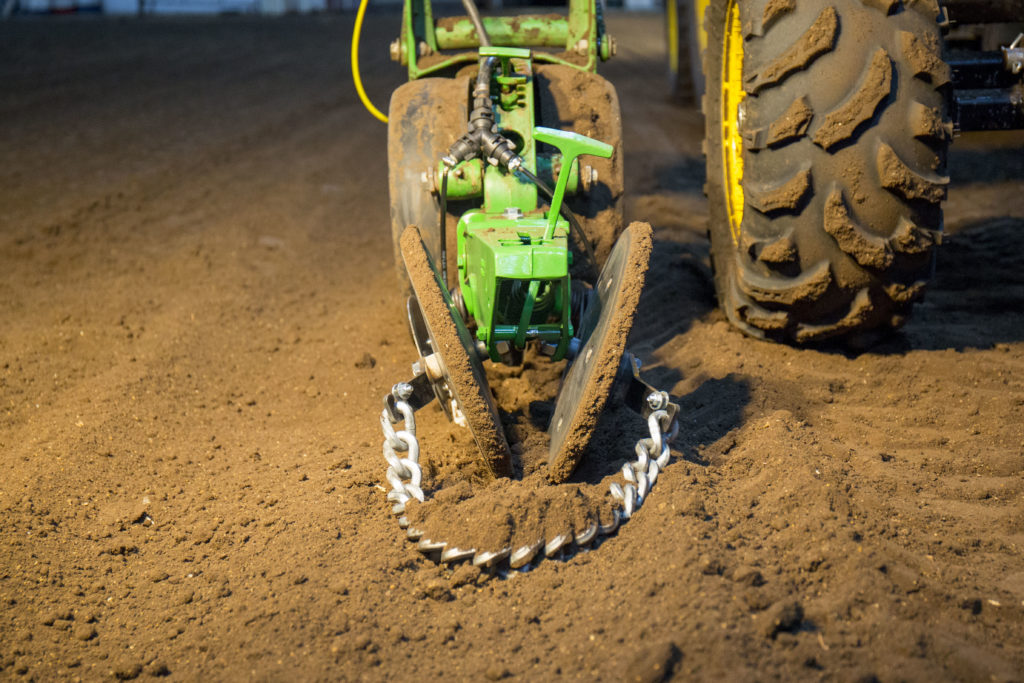
The PWM solenoid simulates a larger tip to achieve larger droplets and fewer drift-able fines. In a similar fashion, the operator can change a pressure set point independent of the speed or rate. This coordinated rate and pressure control is possible through as much as a 6:1 speed range combined with up to a 2:1 rate change.

The PWM valve instantaneously does so by automatically changing the effective tip orifice size.
Endeavor Fertilizer Controller Order FormĬapstan SharpShooter uses PWM (Pulse Width Modulation) technology as a simple, clever way to retain both a set rate and a set pressure whenever a speed change requires a change in the liquid flow. Greenleaf Turbodrop Dual Fan Technology. Greenleaf Technologies – TurboDrop Nozzles. A total of 12 Yield-Pro planter configurations will accept the AccuShot system. Prices range from about $20,000 to outfit a 12-row Yield-Pro single-row planter to about $36,000 to outfit a 48-row twin-row planter. But Evans says, it’s “easier if factory installed.”ĪccuShot hits the market with limited availability this planting season. Figuring a corn price of $3.80 per bushel and a fertilizer cost of $3.78 per gallon, the AccuShot plot netted $46.75 versus $26.70 for the “dribble plot.” Similar results came in test plots using twin row versus single row.ĭesigned for Great Plains’ Yield-Pro Planters, the AccuShot system can be retrofitted to older units. Yields were about the same between the two plots-216 and 218 bushels per acre. In the other, it used the AccuShot system at 2.5 gpa. In one plot, it dribbled on starter at a rate of 5 gallons per acre (gpa). In side-by-side plots, Great Plains planted corn in 30-inch rows at 32,000 seeds per acre. While the results represent only one year in one location, they are promising, Evans says. In 2015, Great Plains conducted field trials in Illinois using AccuShot. Great Plains and Capstan worked on the project for several years before “getting the bugs out,” says Tom Evans, Great Plains agronomic development manager. For using less-expensive, higher-salt polyphosphate starter fertilizer blends, the operator can choose to apply liquid farther from the seed to prevent burn yet ensure effectiveness. When using insecticide or fungicide, an operator might prefer to apply directly on the seed. “Fertilize by the seed rather than by the acre” is the catch phrase Great Plains uses. The gap is key to the system because it represents the amount of product saved with the AccuShot system. A gap ensues, and then another seed follows with another strip of fertilizer behind it. Great Plains demonstrations show a strip of starter fertilizer being placed a half-inch behind a seed in the furrow. A planter frame-mounted hydraulic alternator generates electricity for the system. Solenoids open and close to allow a precise application of liquids. The AccuShot application nozzle incorporates pulsing technology similar to what Capstan introduced 20 years ago to control sprayer nozzles. 
The producer can adjust the amount and location of liquid to be injected. The liquid lands a programmed distance from the seed. The controller considers the length of the seed’s fall and the ground speed of the planter to calculate the correct time to inject liquid into the furrow.

Here’s how AccuShot works: A sensor in the seed tube alerts a controller that a seed is on its way to the furrow.

Its primary use will be for in-furrow starter fertilizer producers also can use the technology for liquid insecticides, fungicides and growth stimulators. The system is a collaborative effort between Great Plains and Capstan Ag Systems Inc. Why dribble expensive starter fertilizer when you can target a specific amount and locate it in-furrow at an optimum distance from the seed? That’s the question Great Plains’ new AccuShot system aims to answer with a simple, “No reason at all.” New system targets in-furrow liquid applications and saves inputs.ĪccuShot places liquid in an in-furrow location where it will be safe and effective. Progressive Farmer - April 2016 Give Seed A Shot








 0 kommentar(er)
0 kommentar(er)
